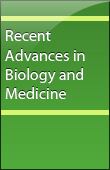


There are two major types of in situ bioremediation: intrinsic and enhanced. Both rely on natural processes to degrade contaminants with (enhanced) or without (intrinsic) amendments. In recent years, in situ bioremediation concepts have been applied in treating contaminated soil and groundwater. Removal rates and extent vary based on the contaminant of concern and site-specific characteristics. There are a number of factor/variables that affect the rate of removal such as contaminant and co-contaminant distribution as well as concentration; indigenous microbial populations and reaction kinetics; and parameters such as pH, moisture content, nutrient supply, and temperature. Many of these factors are a function of the site and the indigenous microbial community and, thus, are difficult to manipulate. Specific technologies may have the capacity to manipulate some variables and may be affected by other variables as well; these specific issues are discussed with each technology in the following sections.